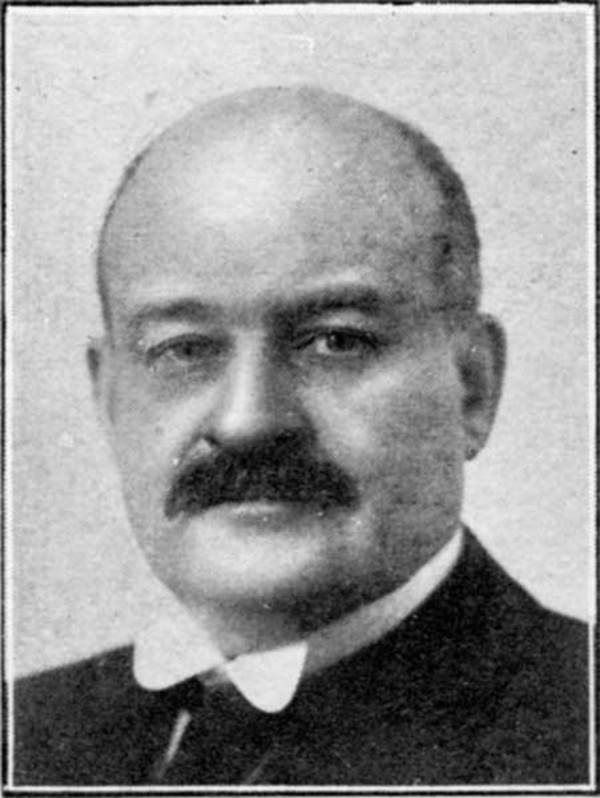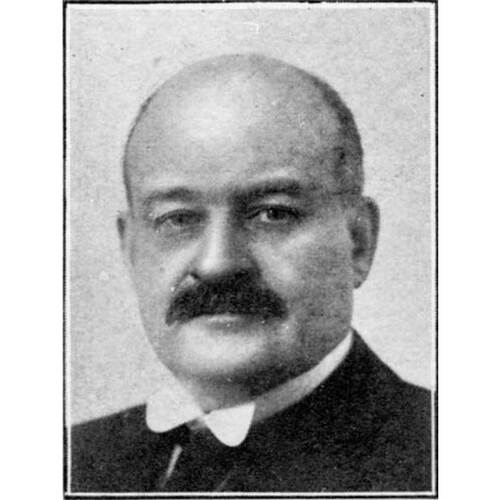
Source: Link
DAVIDSON, ANDREW DUNCAN, businessman; b. 18 May 1853 in Ekfrid Township, Upper Canada, son of William Davidson and Christine McRae; m. 1876 Ella F. McRae of Glencoe, Ont., and they had one daughter; d. 22 April 1916 at the Mayo Clinic in Rochester, Minn.
Andrew Duncan Davidson was educated at Glencoe and briefly attended the Canadian Business College in nearby Chatham before immigrating to the United States in 1872. After working briefly for the Green Bay and Minnesota Railroad in Wisconsin, he moved to Little Falls, Minn. He served as mayor of that town for many years while engaged, together with his brothers (who had also moved south), in the selling of railway and homestead lands. Innovative marketing and financing techniques resulted in the sale of vast tracts of land in the American Midwest and, along with later real estate activity in Canada, earned Davidson the sobriquet of “the greatest land dealer of the continent.”
The Davidson brothers, joined by their partner Alexander Duncan McRae* (and Andrew Duncan’s brother-in-law), returned to Canada in 1902 to consummate one of the largest and most successful land transactions in Canadian history. Years earlier, the Qu’Appelle, Long Lake and Saskatchewan Railroad and Steamboat Company had obtained a charter to build a railway in the North-West Territories from Regina to Prince Albert (Sask.). The line was built in 1890, but the promoters argued that the land adjacent to it between Lumsden and Dundurn was unfit for settlement and demanded that they be allowed “indemnity selections” elsewhere. The government refused and the matter was tied up in the courts when the Davidson brothers and McRae, operating under the corporate identity of the Saskatchewan Valley Land Company, offered to purchase up to 1,250,000 acres of the disputed land from the railway company and another 500,000 acres of homestead lands from the federal government; in return, they undertook to settle, within five years, a specified number of families in each township. The business techniques used by the Davidsons in the United States would now be applied in the Canadian west.
A special company train, carrying prominent farmers, bankers, and businessmen from all over the Midwest, left Chicago for the North-West Territories in June 1902; it picked up many more prospective settlers and land agents and added cars at St Paul, Minn., and Winnipeg. All costs of the journey were paid by the company and, once the travellers reached their destination, “a perfect orgy of land buying” is said to have ensued. Eighteen more excursion trains were organized in the following years, all part of a massive marketing campaign that also included advertisements in American newspapers.
The achievements of the Saskatchewan Valley Land Company attracted the attention of William Mackenzie* and Donald Mann*, the aggressive promoters of the Canadian Northern Railway. In 1903 they transferred the responsibility for selling almost 1,000,000 acres of their railway’s prairie lands to Davidson and his associates. Operating essentially on a commission basis as an agency of the railway, the Saskatchewan Valley and Manitoba Land Company, as it was now known, continued to achieve astonishing results. At the peak of its activities, the company had as many as 3,000 agents working for it in the United States. It specialized in organizing block settlements for various religious and ethnic groups, and another of its trademarks was the great care it took both to attract new settlers – it built hotels which offered free accommodation to prospective purchasers of land – and to establish the transportation and grain-handling facilities that were necessary for successful farming. To be sure, the company had its critics; following its initial purchase of western lands in 1902, some Conservatives charged that it had used its connections with the Liberal government in Ottawa to reap excessive profits. Yet it also had a powerful supporter in Clifford Sifton*, minister of the interior, who declared in 1904, “I can recall no feature of our colonization policy in the Northwest which has been attended with greater success than the efforts of this company.”
The arrangement between the Saskatchewan Valley and Manitoba Land Company and the Canadian Northern came to an end in 1905, but Davidson continued to act as a land agent for the railway. In this capacity, he was as successful as ever; during the first six months of 1906 alone, more than 500 cars of settlers’ effects were unloaded at Davidson, Sask., the town halfway between Regina and Saskatoon named in his honour. In addition, he and his brothers and Alexander McRae became involved in numerous other real estate, lumber, coal, fishery, and even whaling operations inspired by Mackenzie and Mann. Davidson was, among other things, a prominent participant in the negotiations for land and right-of-way concessions in Montreal which led to the construction of the Canadian Northern tunnel under Mount Royal and the planning and development of the Town of Mount Royal. He participated in the purchase and assembly of land for the Canadian Northern Railway’s Pacific terminus at Port Mann, B.C., and for the development of the subdivision of Leaside, just outside Toronto. As a partner of Mackenzie and Mann in huge lumbering operations in British Columbia and Saskatchewan, Davidson served as president of the Canadian Western Lumber Company Limited, the Columbia River Lumber Company, and the Big River Lumber Company. He was also a director of Canadian Collieries (Dunsmuir) Limited – a subsidiary of the Canadian Northern Railway that had originally been part of the business empire of James Dunsmuir – and of Wallace Fisheries Limited, North Pacific Fisheries, and many other companies.
Davidson maintained business interests in the United States and, in his later years, he made his home in Duluth, Minn. Though he had never seen active military service, he was honoured for his work in both countries by being made an honorary colonel of Minnesota and of the Canadian Permanent Force. Known as “the man who made the Saskatchewan valley” and as “the father of the American invasion” of the Canadian west, he is reputed to have founded almost 300 communities on the prairies.
Globe, 24 April 1916. J. H. Archer, Saskatchewan: a history, (Saskatoon, 1980). Pierre Berton, The promised land: settling the west, 1896–1914 (Toronto, 1984). K. D. Bicha, The American farmer and the Canadian west, 1896–1914 ([Lawrence, Kans], 1968). Can., House of Commons, Debates, 19 July 1904: 7042. D. J. Hall, Clifford Sifton (2v., Vancouver and London, 1981–85), 2. J. B. Hedges, Building the Canadian west: the land and colonization policies of the Canadian Pacific Railway (New York, 1939; repr. 1971); The federal railway land subsidy policy of Canada (Cambridge, Mass., 1934). Chester Martin, “Dominion lands” policy, ed. and intro. L. H. Thomas (2nd ed., Toronto, 1973). T. D. Regehr, The Canadian Northern Railway, pioneer road of the northern prairies, 1895–1918 (Toronto, 1976). Martin Robin, The rush for spoils: the company province, 1871–1933 (Toronto, 1972).
Cite This Article
Theodore D. Regehr, “DAVIDSON, ANDREW DUNCAN,” in Dictionary of Canadian Biography, vol. 14, University of Toronto/Université Laval, 2003–, accessed April 27, 2025, https://www.biographi.ca/en/bio/davidson_andrew_duncan_14E.html.
The citation above shows the format for footnotes and endnotes according to the Chicago manual of style (16th edition). Information to be used in other citation formats:
| Permalink: | https://www.biographi.ca/en/bio/davidson_andrew_duncan_14E.html |
| Author of Article: | Theodore D. Regehr |
| Title of Article: | DAVIDSON, ANDREW DUNCAN |
| Publication Name: | Dictionary of Canadian Biography, vol. 14 |
| Publisher: | University of Toronto/Université Laval |
| Year of revision: | 1998 |
| Access Date: | April 27, 2025 |



